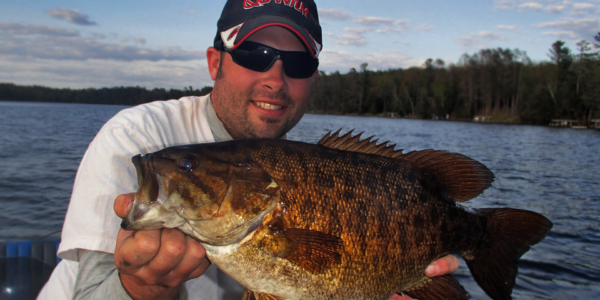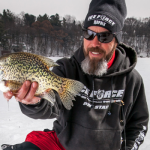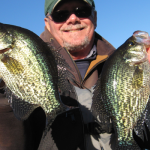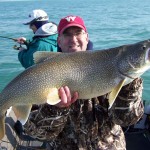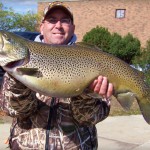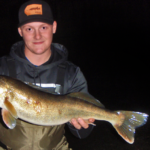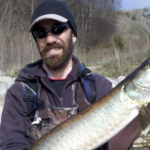By Andrew Ragas
For many bass anglers in Wisconsin, some of the best fishing of the year takes place as soon as the Wisconsin northern zone opens on the first Saturday of May. Rain or shine, the fishing will be good if you’re prepared ahead of time.
The spring thaw, increase in sunlight, and the gradual warming of air and water temperatures draws smallmouths out from their winter slumber. Feeding is their first priority, followed by staging and setting up for the spawn as water temperatures warm into the upper 50’s. The first few weeks of May are a personal favorite time of year as traditional pre-spawn fishing techniques dominate, and there’s very little concern about encountering disinterested, spawning fish.
As we prepare ourselves for May opener, I offer some basic and overlooked guidelines for making your early season of northwoods bass fishing more productive, prosperous, and enjoyable.
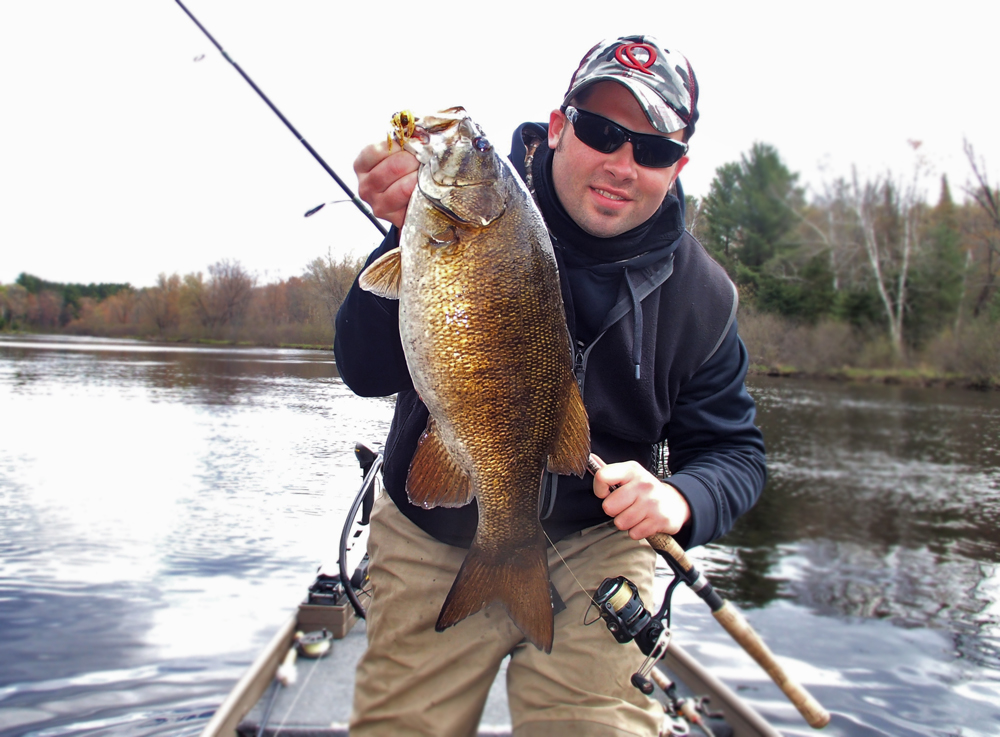
1 – Seek Waters that Warm Fastest
If you aren’t fishing the right places at the right time, then your early season bass fishing could be a struggle. First rule is to seek waters that warm fastest.
The majority of my first bass outings of the tear take place on the lowland flowages, drainage lakes, and river systems of Vilas, Oneida, and Iron Counties. Year after year this pattern is my most consistent, and I preach it the most. I pound these fisheries in early season because following ice-out many of the mesotrophic and oligotrophic natural lakes I usually prefer fishing are still too cold, and their smallmouths have not yet migrated towards the shallows.
These waterways warm rapidly, have shallower depths, are generally nutrient-rich dark water environments, and are proliferated with inflows and outlets that continuously inject warmer water into the system. Their currents coupled with dark water clarity warm surface temperatures at a rapid rate. Quite often, the smallmouth’s biologic calendar on these waters is 1 to 2 weeks ahead of schedule compared with most other lake types and waters in the region. This makes drainage systems unique in regards to targeting fish that are well advanced in spring patterns and more active and aggressive than anywhere else. By the time smallmouths begin spawning at these fisheries, go fish the other places where the pre-spawn bite is only beginning to develop.
On reservoirs such as Iron county’s Turtle-Flambeau Flowage, and others including the Rainbow, Willow, and Rhinelander Flowages in Oneida County, there is no shortage of shallow rocky islands, bars, points, creek mouths and inflows, river channels and creek arms, and man-made rip-rap. All are fish magnets throughout spring. If fishing during a high water year, flooded shoreline vegetation and wood becomes a factor as well, adding to the wealth of habitat availability. Meanwhile on drainage lakes and chains such as the Manitowish, Minocqua, and Three Lakes to name a few, most habitats on these lakes will all be natural, so fishing patterns and lake locations must be adjusted. However, their traits and spring season personalities behave nearly the same.
If you river fish in spring, you’re in for a real treat as the Wisconsin River system and its abundant unpressured smallmouth fishery usually contains a good guaranteed smallmouth bite in spring, unless flooded. Under normal circumstances, 50 to 100 fish days while floating by boat or wading on foot is the norm.
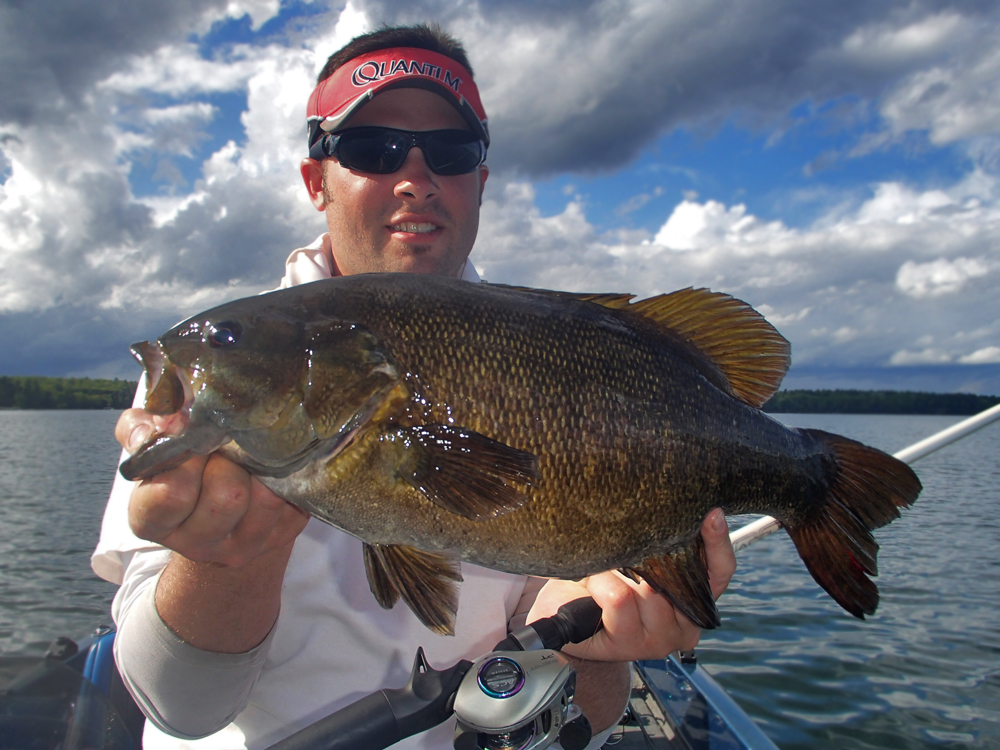
2 – Find and Focus on High Percentage Locations
Obviously the key to catching smallmouths is being able to find them. While this is an impressive skill, it’s nothing worth bragging about until learning the topography, physical features, and habitat of the lake being fished and then comprehending why fish were relating to such areas at that specific time and place. This will then help you understand why fish were caught with presentations and techniques in hand.
Many good smallmouth anglers fail to spend the time in learning the specific features and structural elements of a lake beyond observing a fish locator and the big-screens on their boat. Additionally, searching and scouting for locations that could stand out from the rest of the lake are disregarded as well. Through mapping and charting which is the first requirement, followed by observation and discoveries that outweigh everything else, some impressive fish-concentrating gems on your favorite smallmouth lakes can be found.
In early season, I focus on high-percentage locations that may be staging areas, feeding flats, resting zones, warming locations which I reference as “microwaves”, and isolated ‘spot on the spot’ type of habitats. All of these areas are determined by the underwater structure of the lake and its geography. Every lake I fish for smallmouths is full of these unique spots. Finding majority of them is made possible by attention to detail, thorough scanning of the lake bottom, and experience on the water.
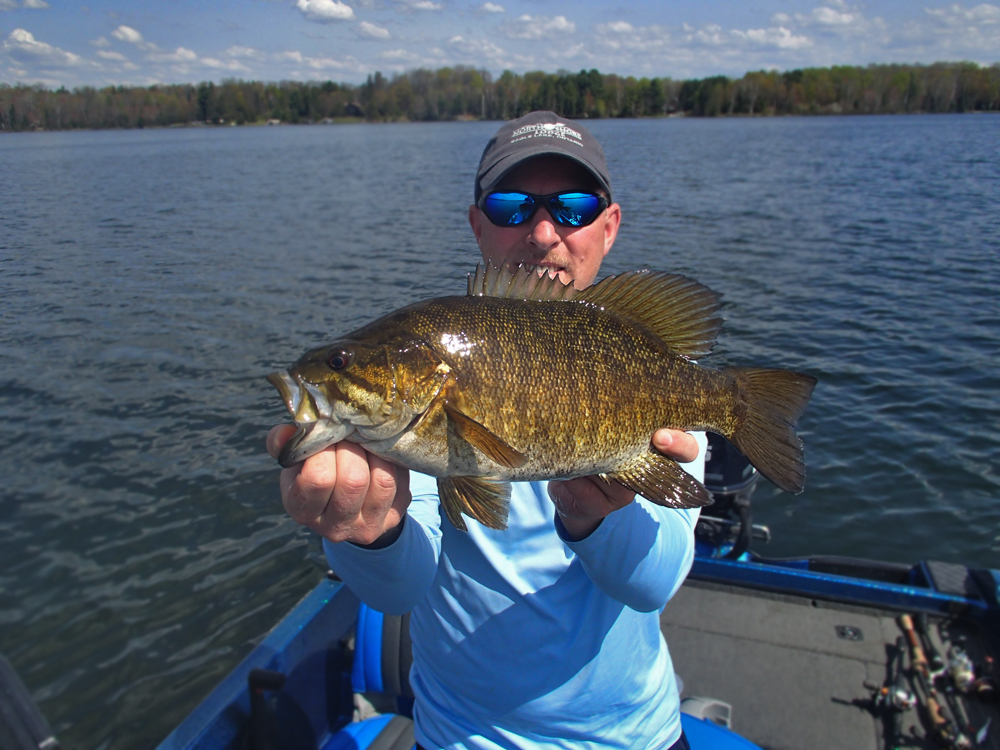
3 – Good Weather Matters
Fishermen are truly some of the best meteorologists out there, and by understanding weather fronts and how fish recover from them can still enable you to have the advantage over fish.
Warming trends are the perfect storm for early pre-spawn fishing. Gradually warming air temperatures and water temperatures followed by lots of sunlight fires the smallmouths up, turning them into ferocious feeders. If you like to save your bass fishing trips until the bite turns red hot, consider choosing your fishing dates for the third or fourth consecutive day of a warming trend. Slow warming trends that prolong the pre-spawn period are best. Meanwhile rapid warming trends that could raise water temperatures by 10 to 15 degrees in a week and rapidly accelerate the spawn are worst.
It happens every May – just when you think you’ve got the fish dialed in and are anticipating epic bites, Mother Nature jacks up the plans and your fishing itinerary. Thanks to wind, and rain and cold fronts the fishing goes south.
When spring cold fronts strike just remember smallmouths aren’t likely to move far. The change in barometric pressure affects their swim bladders, limiting their activity levels to the point of showing no aggression. From their staging and spawning areas they’ll slide into deeper nearby water. In their minds, smallmouths just know they have to hang tight for a day or two in inactivity and until conditions stabilize before continuing on with their feeding and movements.
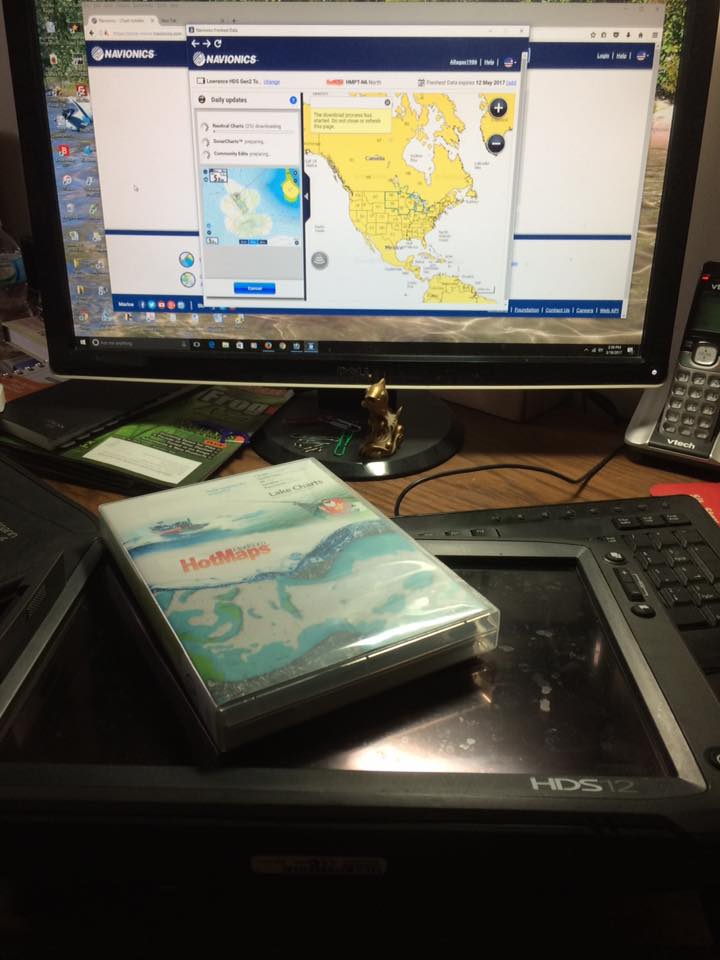
4 –Marine Electronics Maintenance & Updates
Marine electronics units and mapping systems continue to evolve and update at a rapid pace. Manufacturers are in an arms race with one another. In order to keep up with the times, some anglers can afford buying the biggest, most modern and powerful combo fish locators/GPS charts annually. Prices for the most advanced units are astronomical therefore a segment of anglers cannot afford to buy frequently. To rectify and make the most of your existing marine electronics, I encourage everyone to update and maintain them annually.
Despite new fish locators being brought to the market annually, many marine manufacturers are all incorporating the ability to update nearly all multi-function displays using their proprietary software versions on specific units. These software updates allow us to fix bugs and glitches in prior software, and give us the ability to add new features and functionality to them. Updating your fish locator with the latest software updates and updating through an SD or micro-SD card is economical, practical, and usually costs nothing but some time to do. From here, the performance, detail, and functionality of your fish locator has improved over the previous version you had been using.
Running a set of Lowrance HDS units on each of my boats, I follow through on updating BOTH my individual units each spring with the latest software updates, including the navigational charts they operate. Using Navionics Hotmaps Platinum for my GPS navigation, I have the luxury of operating nautical charts, sonar charts, and utilizing community edits and angler contributions which add detail to topography all the time. From there, I can then update my charts and continue installing features to them annually through my Navionics account.
Software updates are a good thing. It means the manufacturer is adding new technology to your out-dated system or addressing issues on previous software versions so you’re running up to speed. By doing so, you’re keeping your marine electronics working to full potential without having to shell out thousands of dollars on the newly released and more expensive marine electronics!
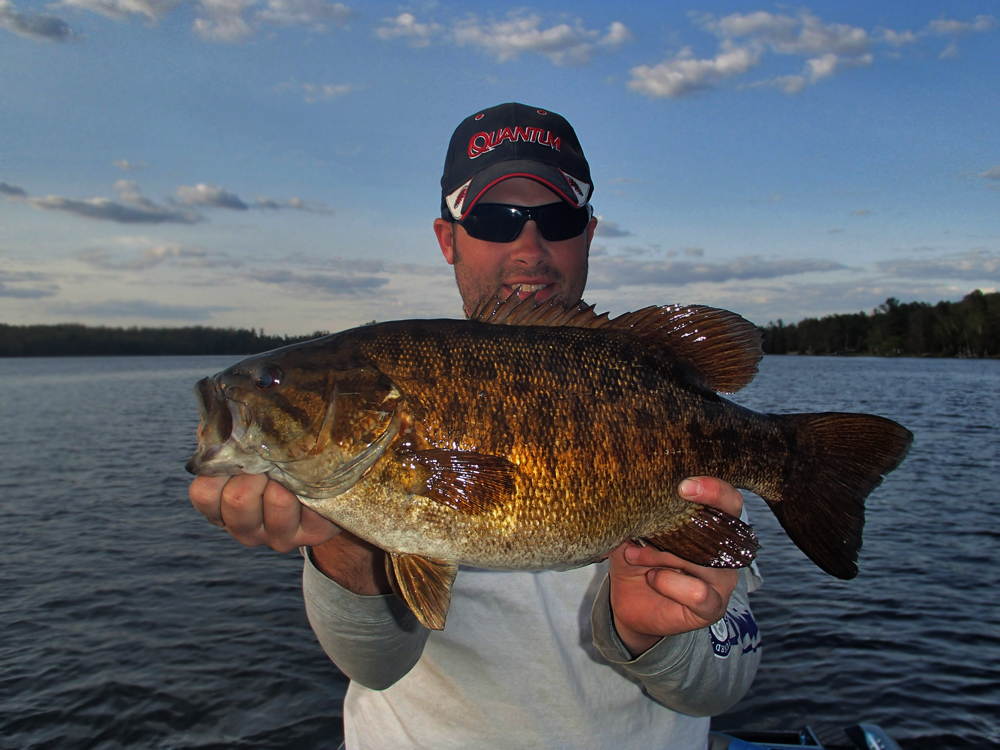
5 – Fish Smarter, Not Harder
At every smallmouth seminar I present and guided bass trip I host, I often remind everyone to fish smarter and not harder, and conclude by delivering this logic.
Most smallmouth anglers are fixated on the wrong things and prioritizing the wrong subjects. In all facets of smallmouth fishing, focus on becoming as efficient as possible. Acquiring this skill will greatly increase your likelihood for sustained success.
Consider this logic of fishing smarter and not harder. There’s no shame in compiling an honest assessment of your fishing strategies, and self-evaluating your tendencies. Compile an honest assessment and ask yourself the following: How often is a bait presented in front of fish?; How much time does it take for you to thoroughly fish a spot?; Are your electronics are being utilized properly?; Are you are taking advantage of weather conditions, determined the timing of feeding windows, and fishing baits according to the smallmouth’s prey? If you can take steps to become more efficient in this manner, you will increase your success exponentially for this season and beyond.


